| So I've reached Lancaster, and Lawson, in his delicious prose, describes the surrounding terrain: "The Land here is pleasantly seated, with pretty little Hills and Valleys, the rising Sun at once shewing his glorious reflecting Rays on a great many of these little Mountains." Which sounds, frankly, exactly like my own feelings as I traverse this lovely Piedmont terrain. I've fallen behind in descriptions and observation, so I'm staying home this week to catch up, hopefully blogging every day this week. Look out! Lawson noted not just the hilliness but the stone beneath the surface that is responsible for the hills. |
In fact, Lawson describes a specific spot nearby where he stopped and had lunch: "At Noon we halted, getting our Dinner upon a Marble-Stone, that rose it self half a Foot about the Surface of the Earth, and might contain the Compass of a Quarter of an Acre of Land, being very even." This specific spot? As usual, guided by the unerring Val Green, I found it where he sent me. It lies along -- of course -- Flat Rock Road. I sat on that rock and had lunch, like Lawson did. Meanwhile, across from the road is, naturally, a quarry, and down the road a bit I had passed a monuments business, so it's clear we've entered stone territory.
But what I loved even more was Forty Acre Rock Heritage Preserve, an outcropping of the same granite a few miles away. There the rock -- it's actually only 14 acres, but who's counting -- spreads out and shows its face, collecting water in low places and creating pool ecosystems that support plants like elf orpine, a tiny plant "strictly limited to vernal pools on hard, crystalline rock." It has red berrylike structures, but you don't need me to tell you that; Lawson himself mentions "growing upon it in some Places a small red Berry, like a Salmon-Spawn, there boiling out of the main Rock curious Springs of as delicious Water, as ever I drank in any Parts I ever travell'd in." Not sure I'd drink of these pools, but the orpine is all over Forty Acre Rock, and I found those vernal pools some of the loveliest microclimates I've ever seen. Take away the graffiti and this is very much like what Lawson would have seen.
Anyhow, Brent judged me worthy and took me off the beaten track to what he called the rock house, a place he promised I would never find on the Forty Acre Rock territory if left to my own devices. He provided this description, from the Mills Atlas of South Carolina from 1825:
"We must not omit however the extraordinary rocks in the Lancaster District, which are thus described by an intelligent traveler.
“We proceeded on horseback along the low lands up the creek, proposing first to visit a place called the rock house. After having advanced two miles, we descried at the head of a deep valley, in which we rode, a beautiful cascade of water tumbling from the side of the hill, on which this rock-house stands. This spot is highly romantic. The rocks rise in rude piles above the valley, to the height of about two hundred and fifty feet; crowned occasionally with red cedar and saving. About half way up the hill, is the rock-house, resembling the roof of a house. And at the lower end of it is an aperture, from which a small stream of clear water issues forth; falling over the rocks below into the valley. We clambered up the side of the hill to the source of the cascade, and found the rock-house to be composed of two large flat rocks; leaning against each other at the top; forming a complete shelter from the sun and rains. The area of this shelter may be about ninety feet in circumference, remarkably dark and cool; at the bottom, the stream forming the cascade, brawls along over the rocks, and approaches the steep part of the hill, and is precipitated down its side. Upon the whole the cascade of Juan Fernandez, celebrated by circumnavigators, may be more beautiful; as that of Niagra is more grand and sublime; but still this rock and cascade would rank high in ornamental gardening with all those who either for pleasure or pride covet the possession of these natural beauties. "
I will not debase this lovely description with unequal words of my own: "brawls along over the rocks" -- who could write that? Lawson, perhaps, but he never saw it, and I would not have either, had I not had a generous guide. The state of South Carolina would love to create a trail leading to the rock house, but with the constant assaults on Forty Acre Rock by vandals, one can understand their reluctance to proceed. I agree, and thus I tell you about it -- and I will provide images -- but I will not tell you how to get there. If you're good, we'll see later on.
But in front of Georgia Stone on Flat Rock Road were large pieces of that granite set on edge to keep people from driving onto the property (or into the quarry, I think), and around them were countless shards of rock. (A broken piece of old pottery, I learn, is a sherd, or potsherd, not a shard; I'm pretty sure I'm right on the rock, though.) Without fear that I was defrauding the company, I gathered up a few. A couple went to my wife and sons. A small one (I am scarcely looking for much extra weight) will walk the rest of the way along the Lawson Trek.
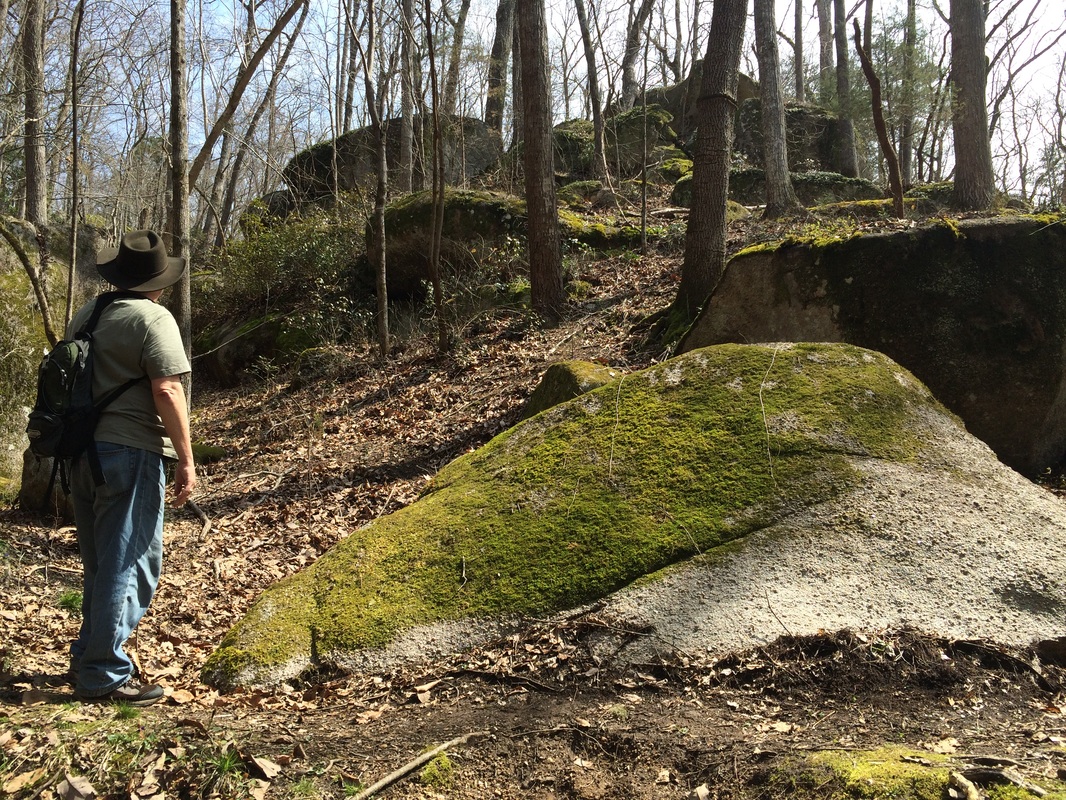
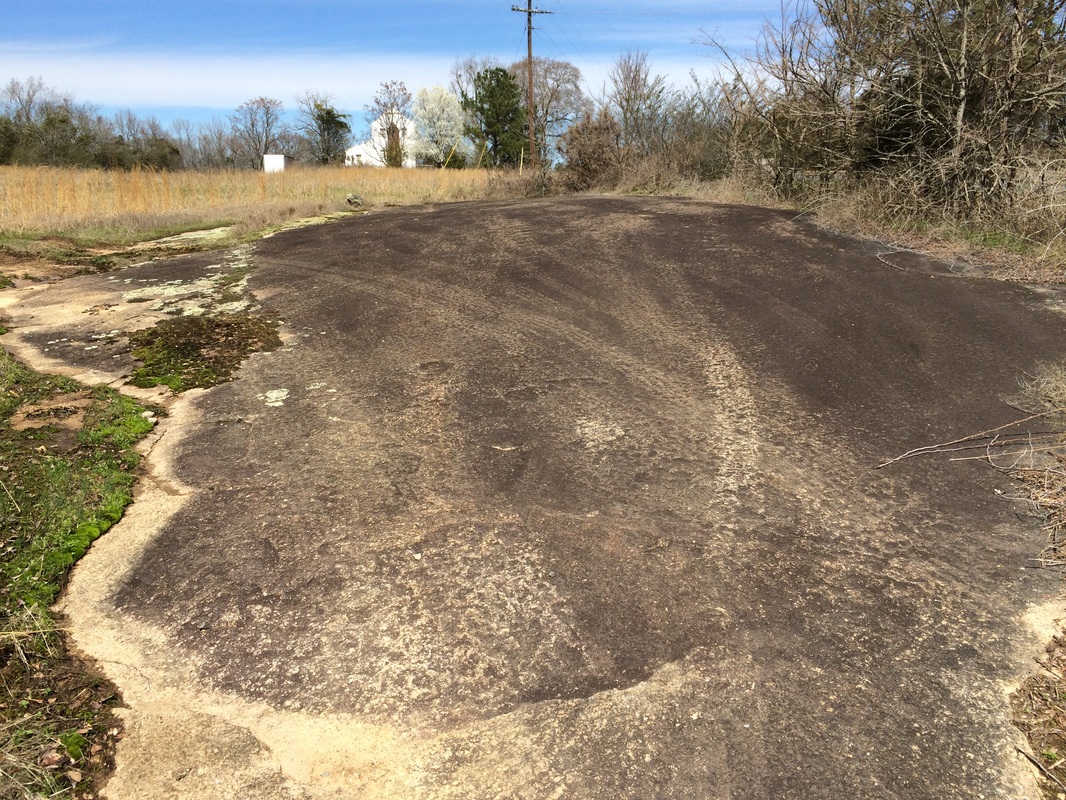
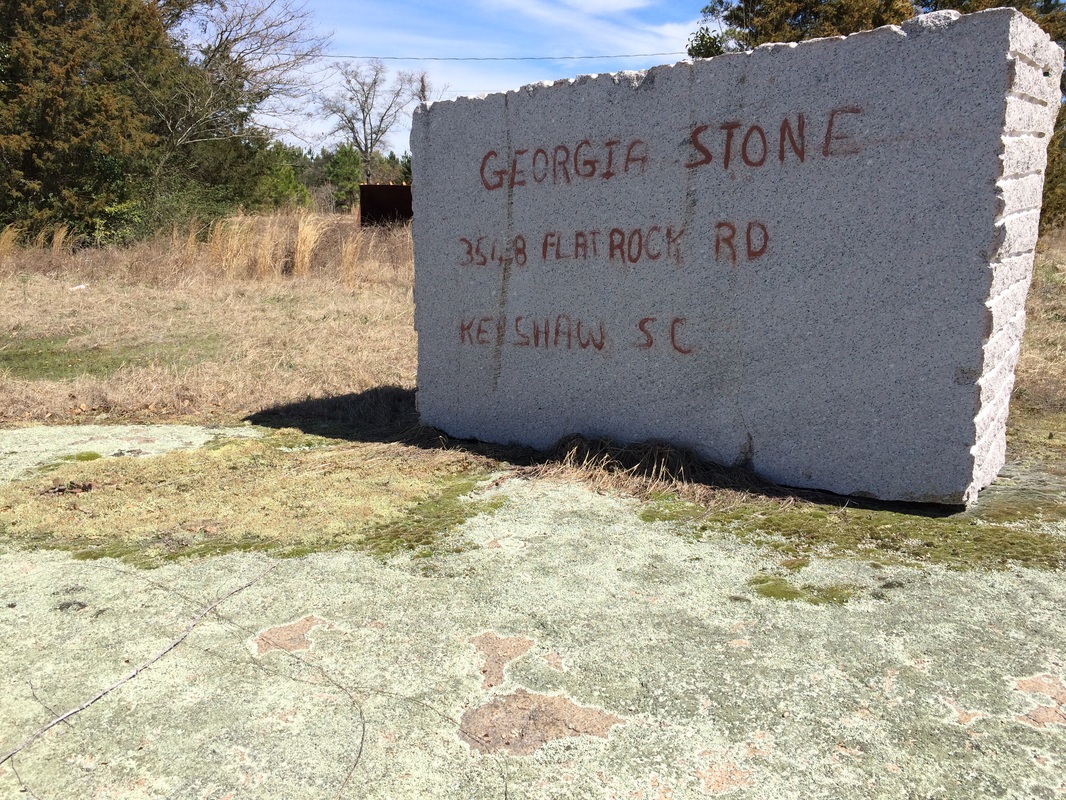
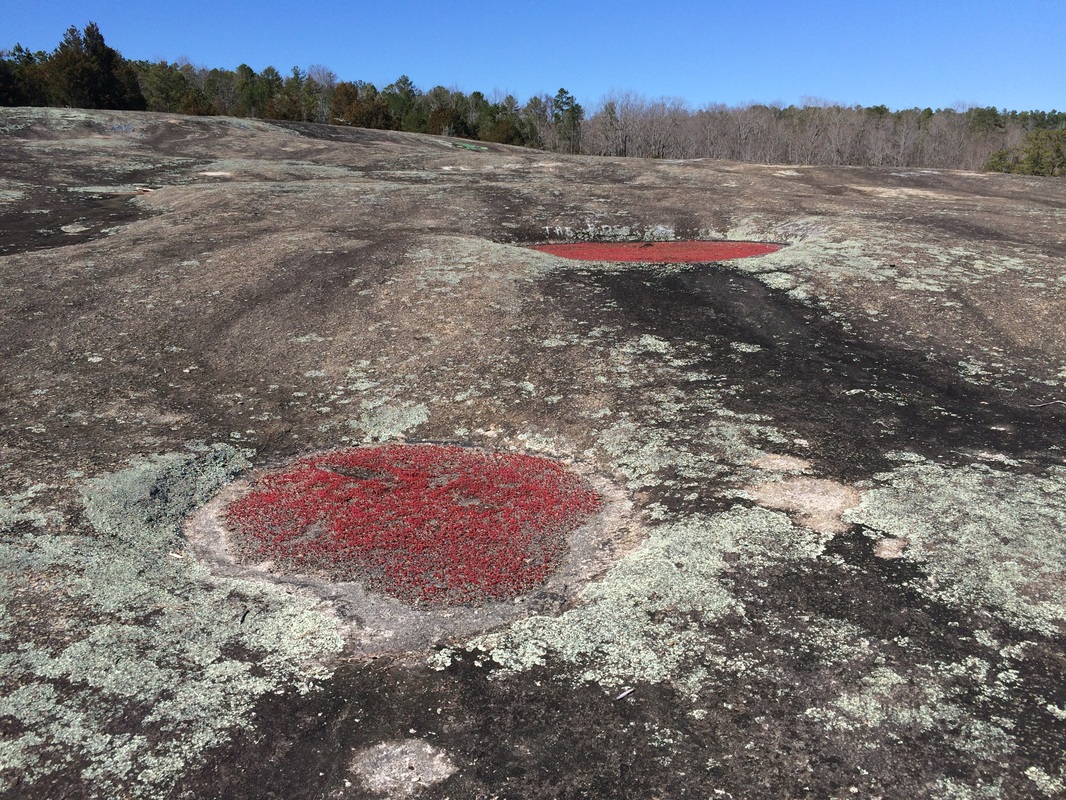
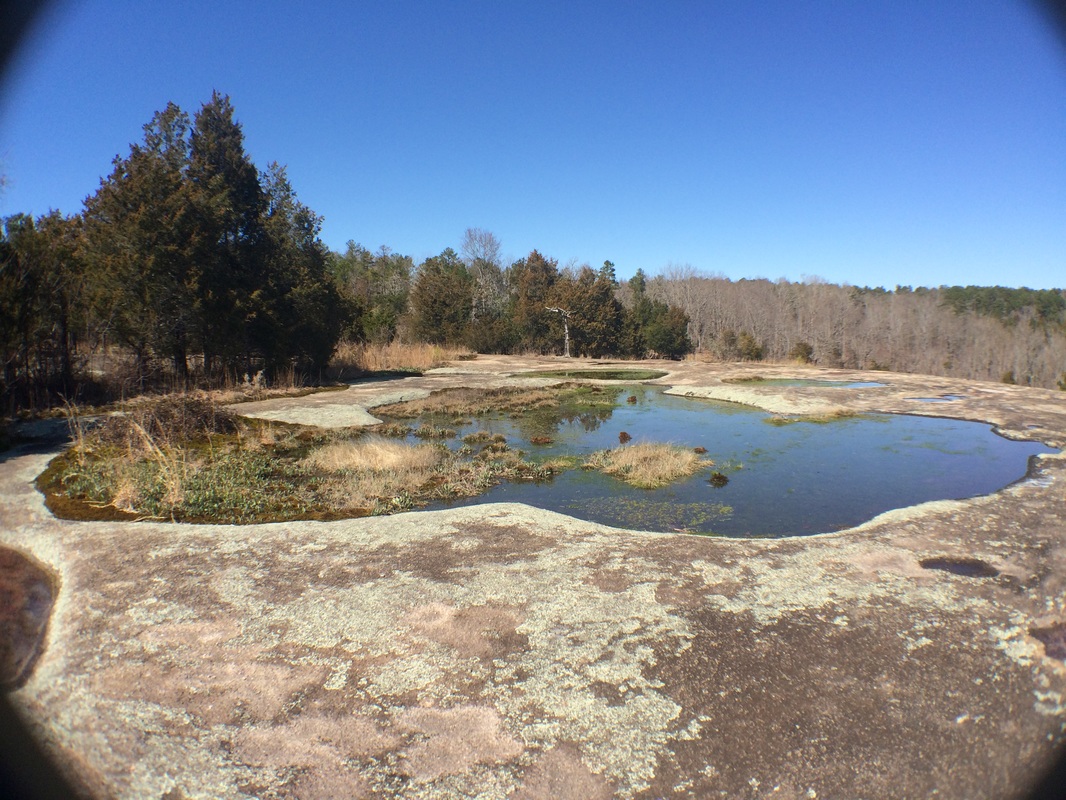
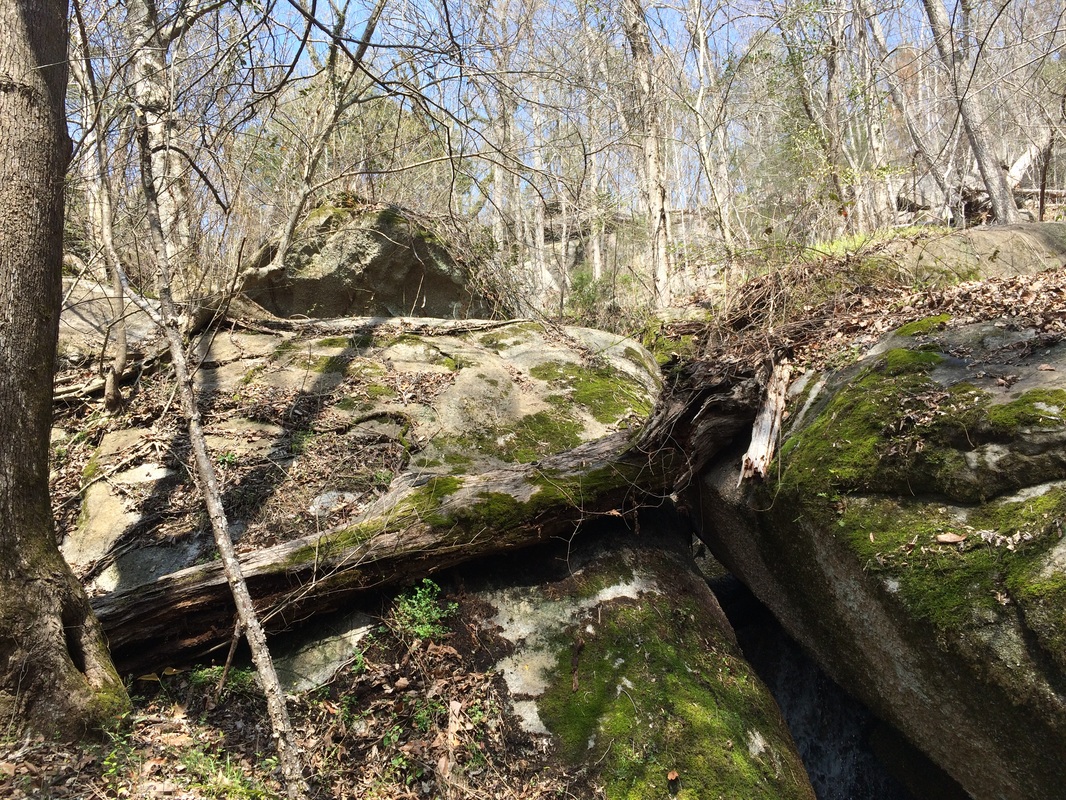
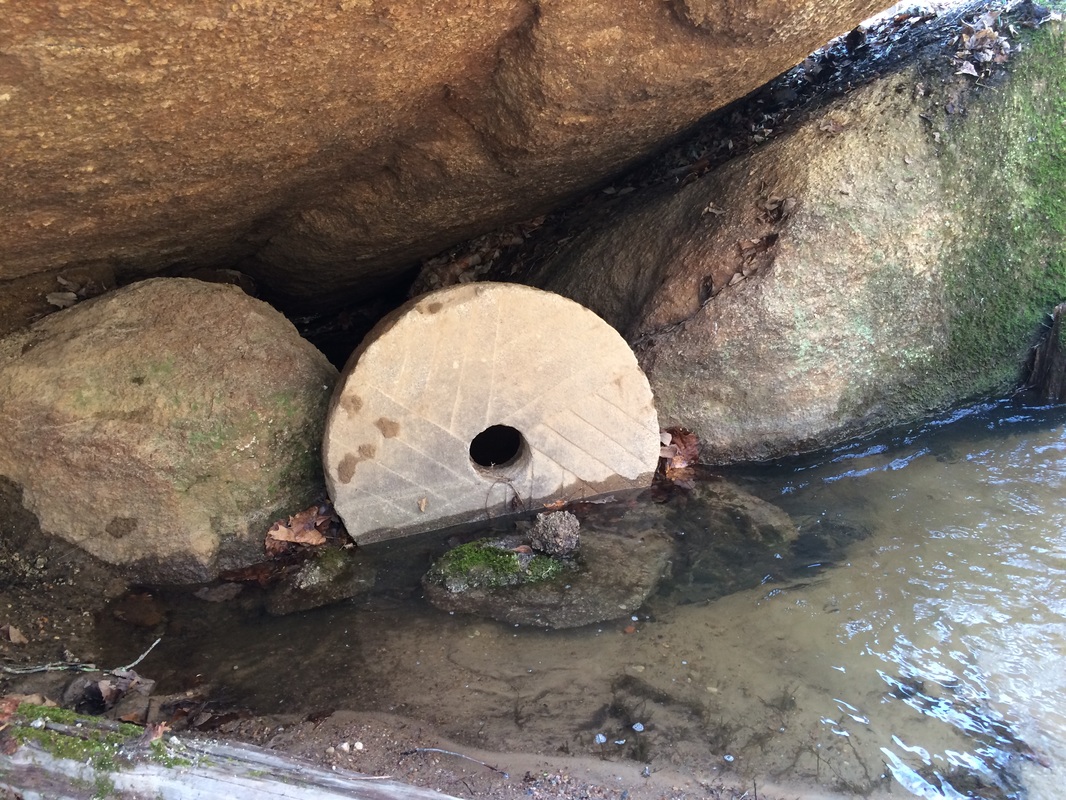
 RSS Feed
RSS Feed